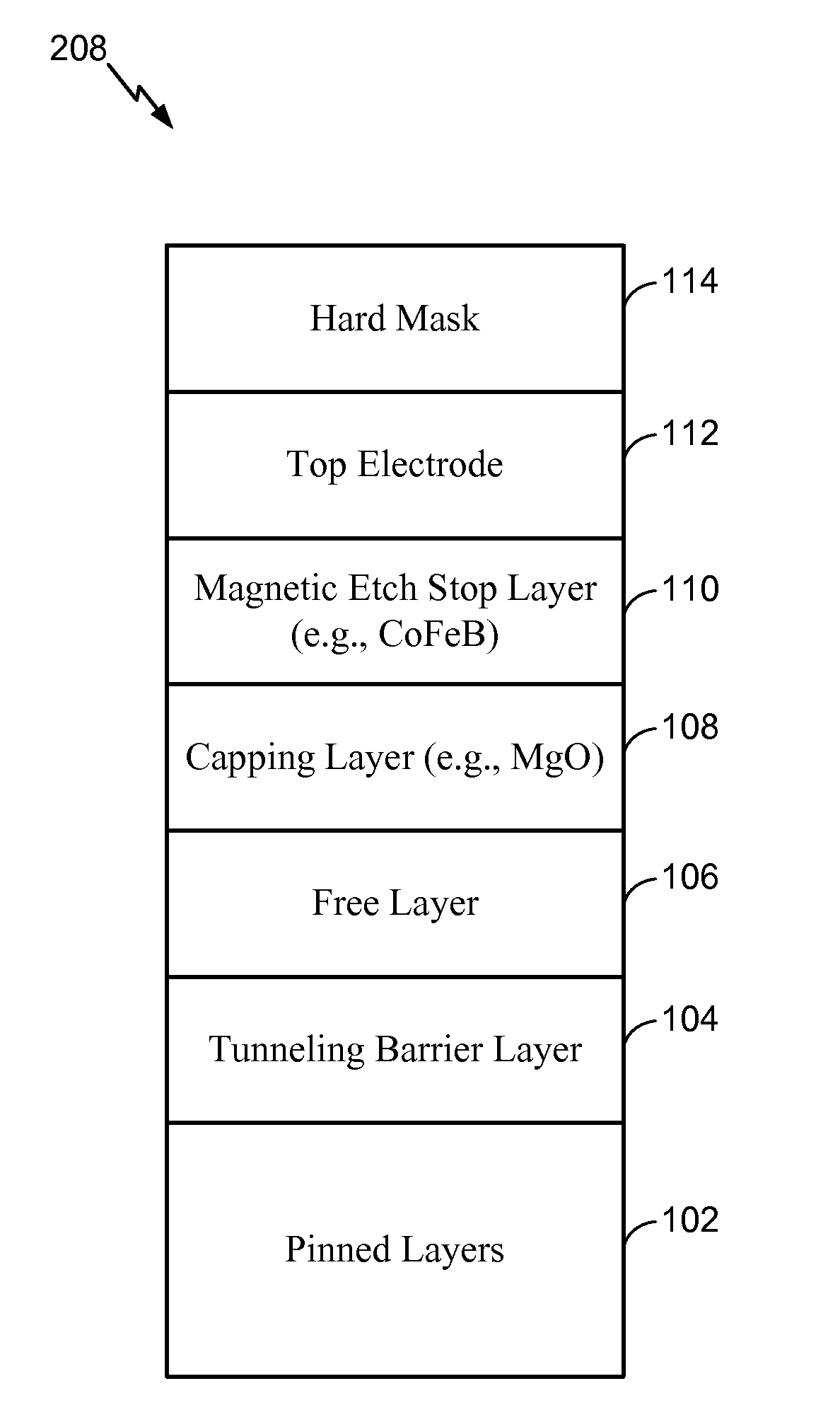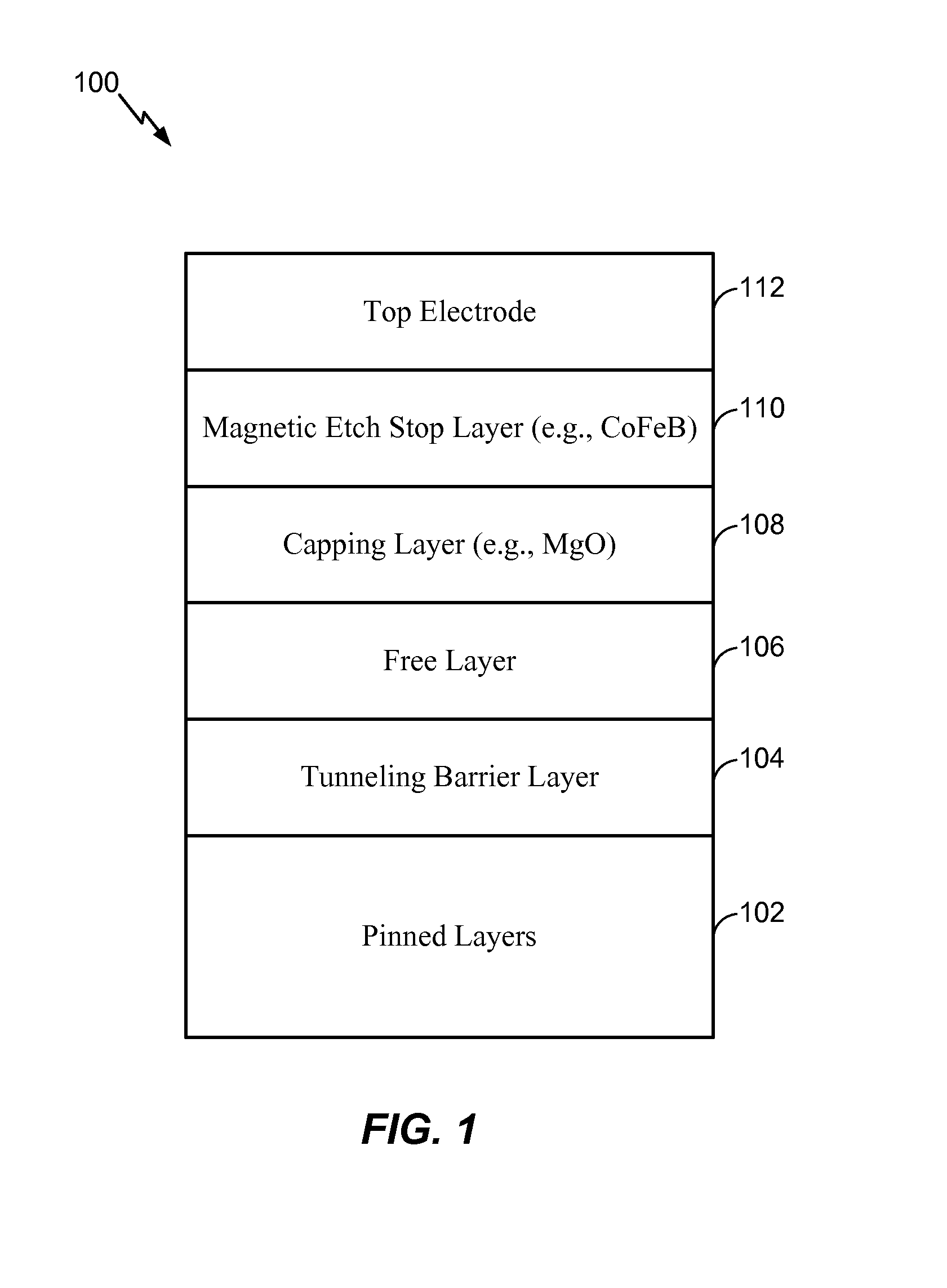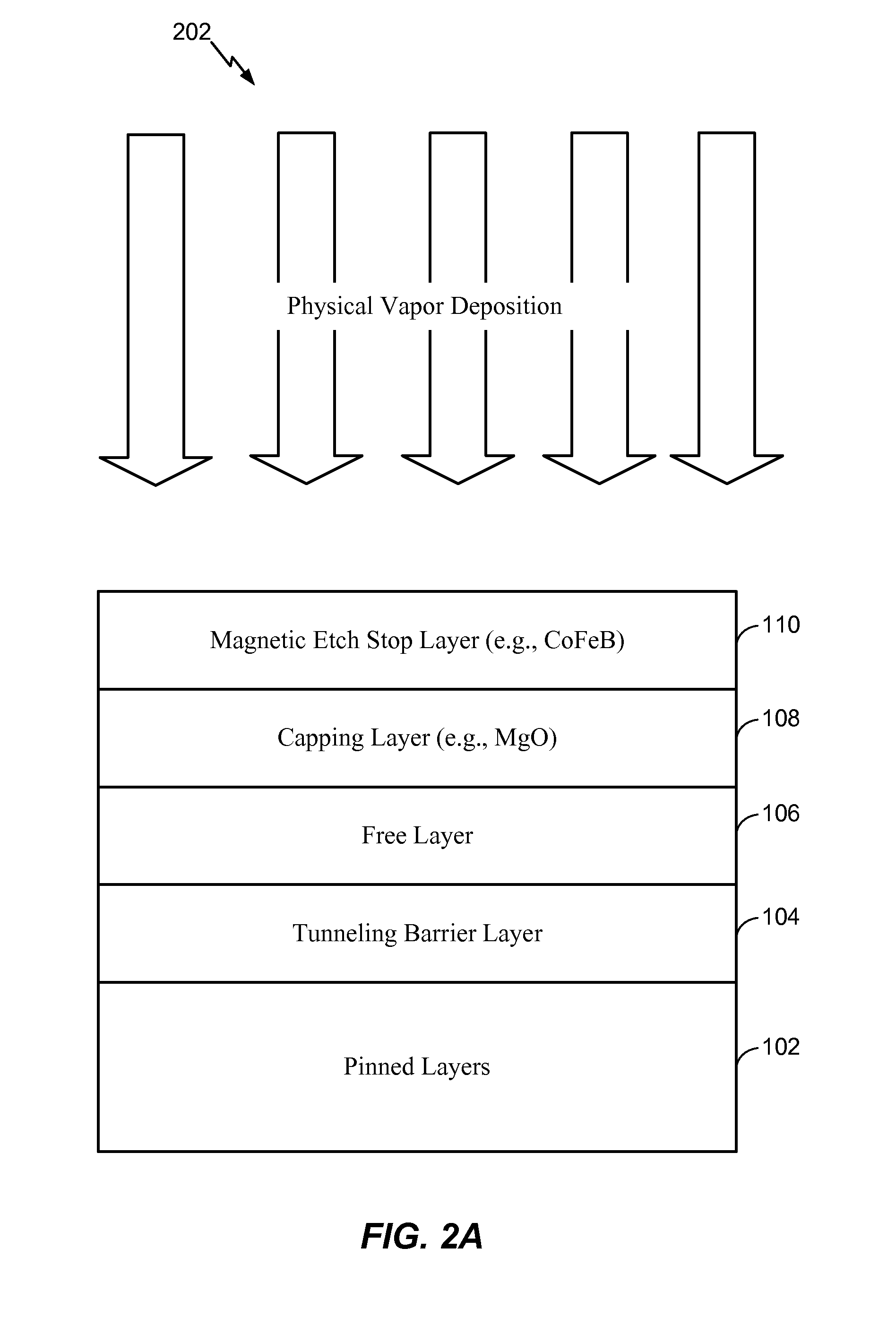Magnetic etch stop layer for spin-transfer torque magnetoresistive random access memory magnetic tunnel junction device
a technology of magnetic tunnel junction and stop layer, which is applied in the direction of magnetic field-controlled resistors, semiconductor devices, electrical devices, etc., can solve the problems of significant degradation and damage to the magnetic properties of the free layer
- Summary
- Abstract
- Description
- Claims
- Application Information
AI Technical Summary
Benefits of technology
Problems solved by technology
Method used
Image
Examples
first embodiment
[0027]In a first embodiment, the magnetic etch stop layer 110 may be sufficiently thin as to operate as a “magnetically dead” layer. For example, a thickness of the magnetic etch stop layer 110 may cause the magnetic etch stop layer 110 to be substantially magnetically inert. As a non-limiting illustrative example, the thickness of the magnetic etch stop layer 110 may be approximately 5 Angstroms or less such that the magnetic etch stop layer 110 is substantially magnetically inert. When the magnetic etch stop layer 110 is magnetically inert, the magnetic contribution of the magnetic etch stop layer 110 to the STT-MRAM MTJ device 100 may be significantly reduced (or may be non-existent). For example, using a “thin” Cobalt Iron Boron (CoFeB) layer on top of a Magnesium Oxide (MgO) capping layer may enhance performance of the STT-MRAM MTJ device 100 by aiding in the formation of high perpendicular magnetic anisotropy in the free layer while protecting the free layer 106 during reactiv...
second embodiment
[0028]In a second embodiment, the thickness of the magnetic etch stop layer 110 may cause the magnetic etch stop layer 110 to introduce in-plane anisotropy (e.g., exhibit magnetic moments) to the STT-MRAM MTJ device 100. As a non-limiting example, the thickness of the magnetic etch stop layer 110 may be between approximately 10 Angstroms and 30 Angstroms. The in-plane anisotropy (as opposed to a perpendicular anisotropy having a magnetic moment oriented out of the plane (e.g., vertically) of the STT-MRAM MTJ device 100) may reduce the switching current density (or energy) needed to operate the STT-MRAM MTJ device 100 without degrading tunnel magneto-resistance (TMR) and thermal barrier of the STT-MRAM MTJ device 100. For example, the magnetic etch stop layer 110 may be “weakly” coupled to the free layer 106 by ferromagnetic coupling. The free layer 106 may have a perpendicular anisotropy (e.g., a magnetic moment oriented in a vertical direction) and the magnetic etch stop layer 110 ...
PUM
 Login to View More
Login to View More Abstract
Description
Claims
Application Information
 Login to View More
Login to View More - R&D
- Intellectual Property
- Life Sciences
- Materials
- Tech Scout
- Unparalleled Data Quality
- Higher Quality Content
- 60% Fewer Hallucinations
Browse by: Latest US Patents, China's latest patents, Technical Efficacy Thesaurus, Application Domain, Technology Topic, Popular Technical Reports.
© 2025 PatSnap. All rights reserved.Legal|Privacy policy|Modern Slavery Act Transparency Statement|Sitemap|About US| Contact US: help@patsnap.com



